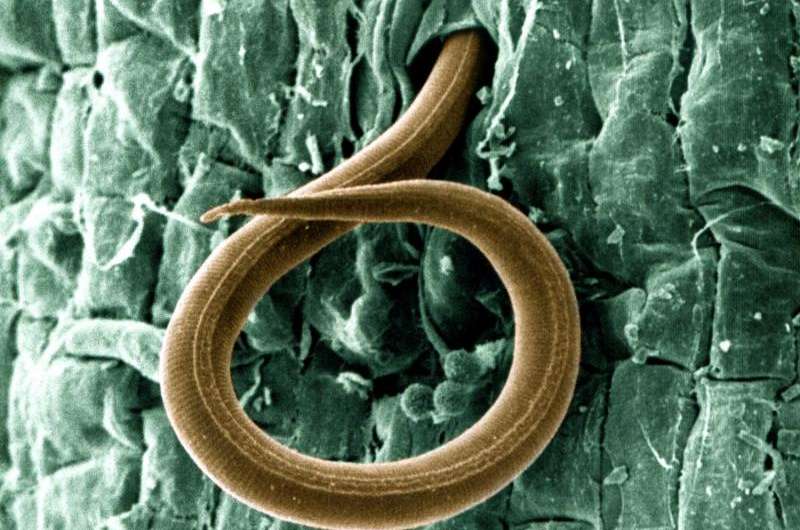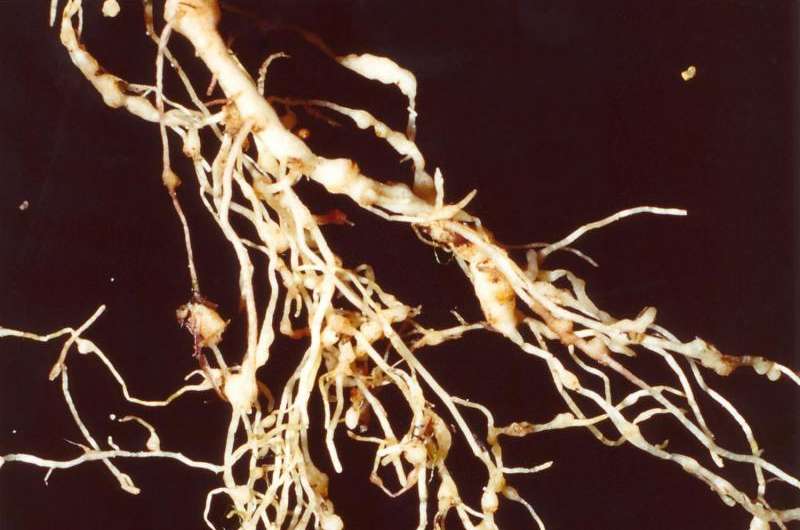Scientists discover new approach to managing parasitic roundworms

Roundworms that feed on plants cause approximately $100 billion in annual global crop damage. But a new way of disrupting the motility and reproduction of these plant parasitic nematodes discovered by a University of New Hampshire scientist may one day provide farmers with a new way to safely manage these agricultural pests.
UNH has filed a patent for the discovery made by NH Agricultural Experiment Station researcher Rick Cote, professor and chair of the Department of Molecular, Cellular, and Biomedical Sciences. Cote found that the phosphodiesterase enzyme (PDE) is a promising target to combat roundworm infestations in agricultural crops such as corn, cotton, wheat, soybean, rice, and potato.
For the past 30 years, Cote has studied a PDE present in the human retina that, when defective, can cause retinitis pigmentosa, a leading inherited cause of vision loss and blindness. Five years ago, Cote was funded by the NH Agricultural Experiment Station to initiate a research project examining the physiological role of PDEs in nematodes. He discovered that PDEs present in nematodes control the signaling pathways responsible for nematode motility and reproduction.
"Our research supports the idea that chemical compounds that inhibit nematode PDEs may serve as 'next generation' nematicides for the purposes of managing plant parasitic nematodes," Cote said.
Cote has focused attention on root-knot nematodes. Members of the Meloidogynes genus, these parasitic roundworms can infect about 2,000 species of plants and are one of the most damaging group of parasitic nematodes to agricultural crops worldwide. Traditional approaches such as applying chemical pesticides have been partially successful in reducing plant parasitic nematode damage to crops. Furthermore, current chemical control agents are toxic to wildlife and humans, and their use is highly restricted.

"When we take a compound that inhibits a specific member of the PDE enzyme family and apply it to nonparasitic nematodes, the chemical can slow down their locomotion and impair their ability to sense food in their environment. In the case of the harmful root-knot nematode, these PDE inhibitors can prevent them from infecting plant roots," Cote said.
The PDE inhibitor compound could be applied to a plant via spraying, dusting and dipping or to the environment of the plant such as soil, water, fertilizer, and pots. The compound also could be applied at any stage of development of the parasitic nematode, from embryonic stage to adult stage. However, much basic and applied research remains to be done before a PDE inhibitor for parasitic nematodes can be developed and used by farmers.
"Our research team is well positioned to identify which PDEs are the best targets for pharmacological disruption of the nematode lifecycle. What we currently lack are the drug-discovery resources of a large pharmaceutical or agrichemical company. We are optimistic that the ecological, public health, and economic benefits will drive this work to the successful development of new compounds that precisely target plant parasitic nematodes without adverse effects on the agricultural ecosystem: farmers, crops, and wildlife," he said.
Provided by University of New Hampshire



















